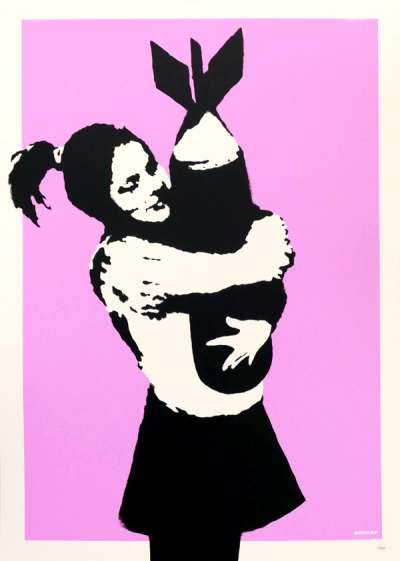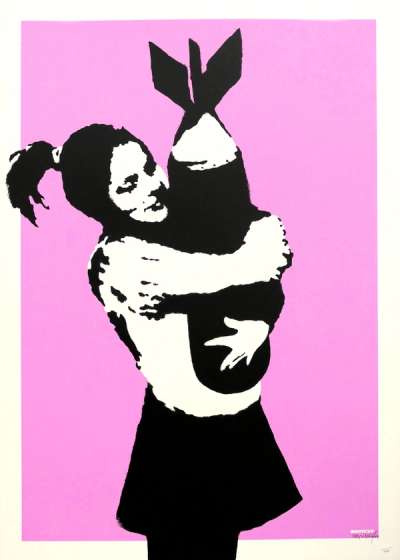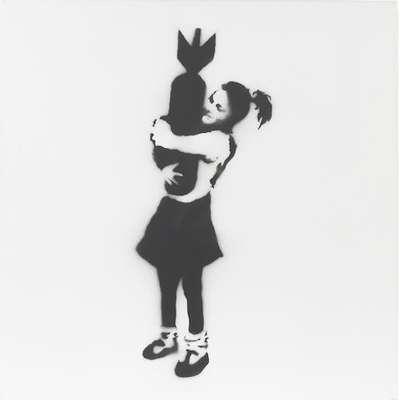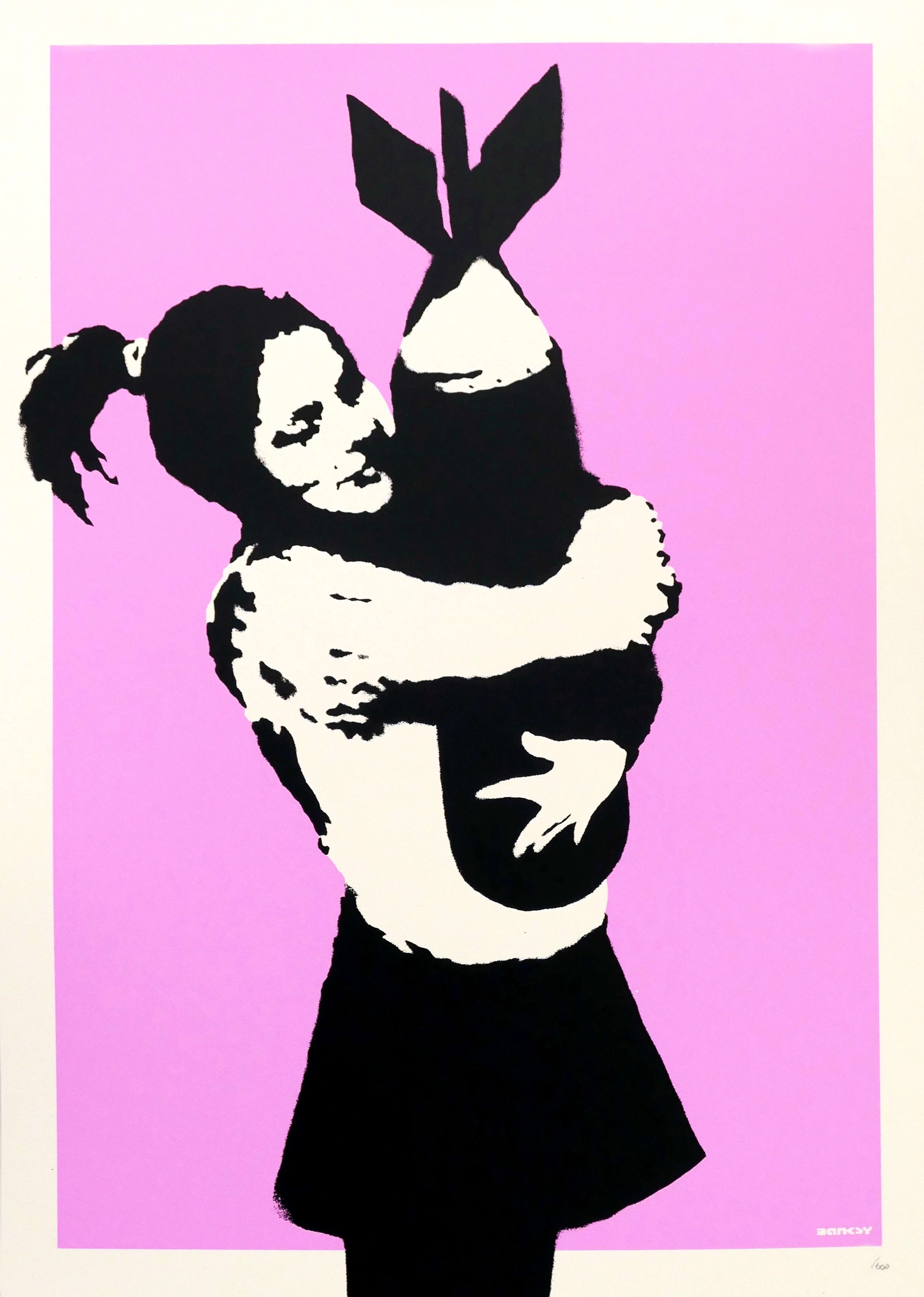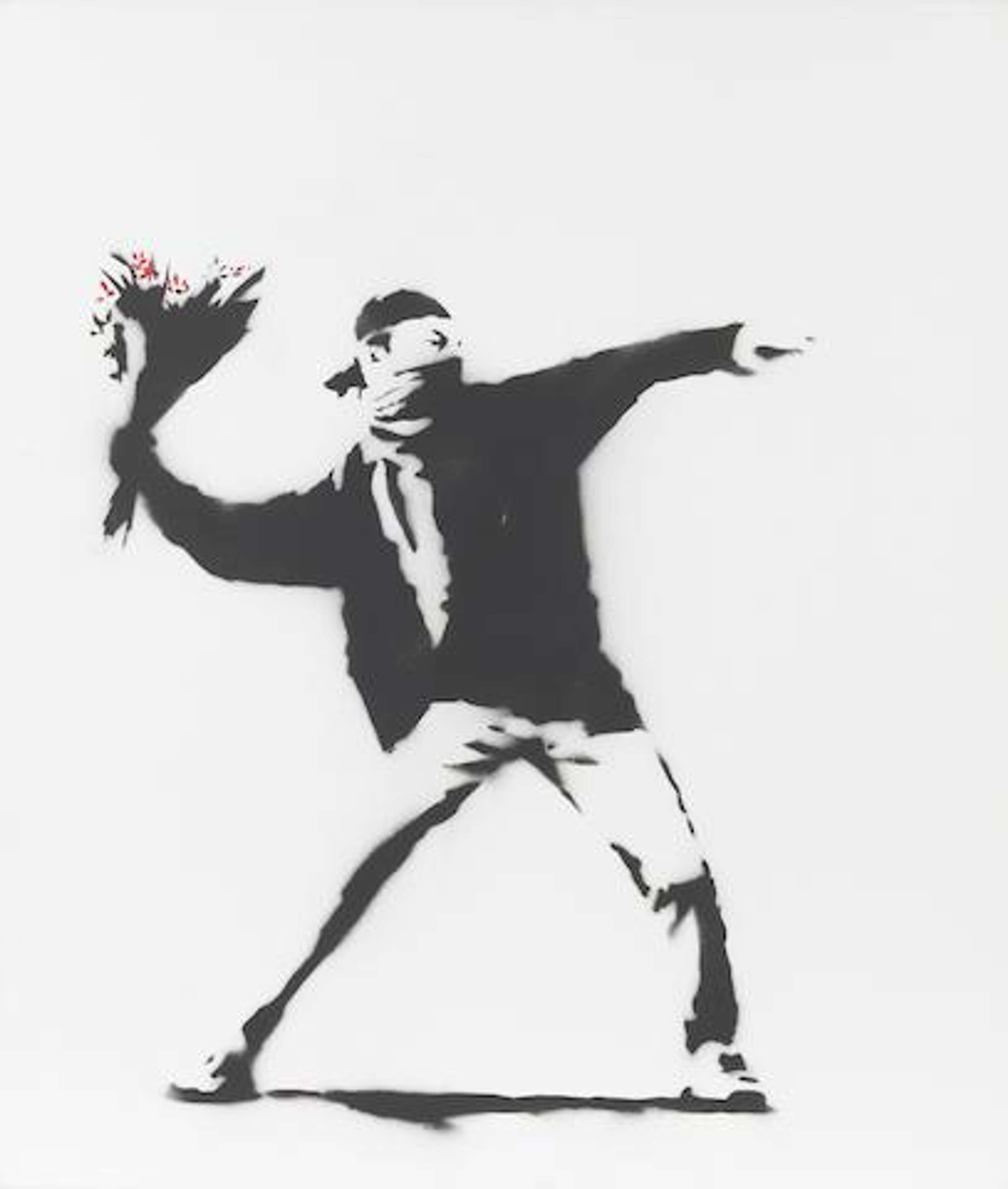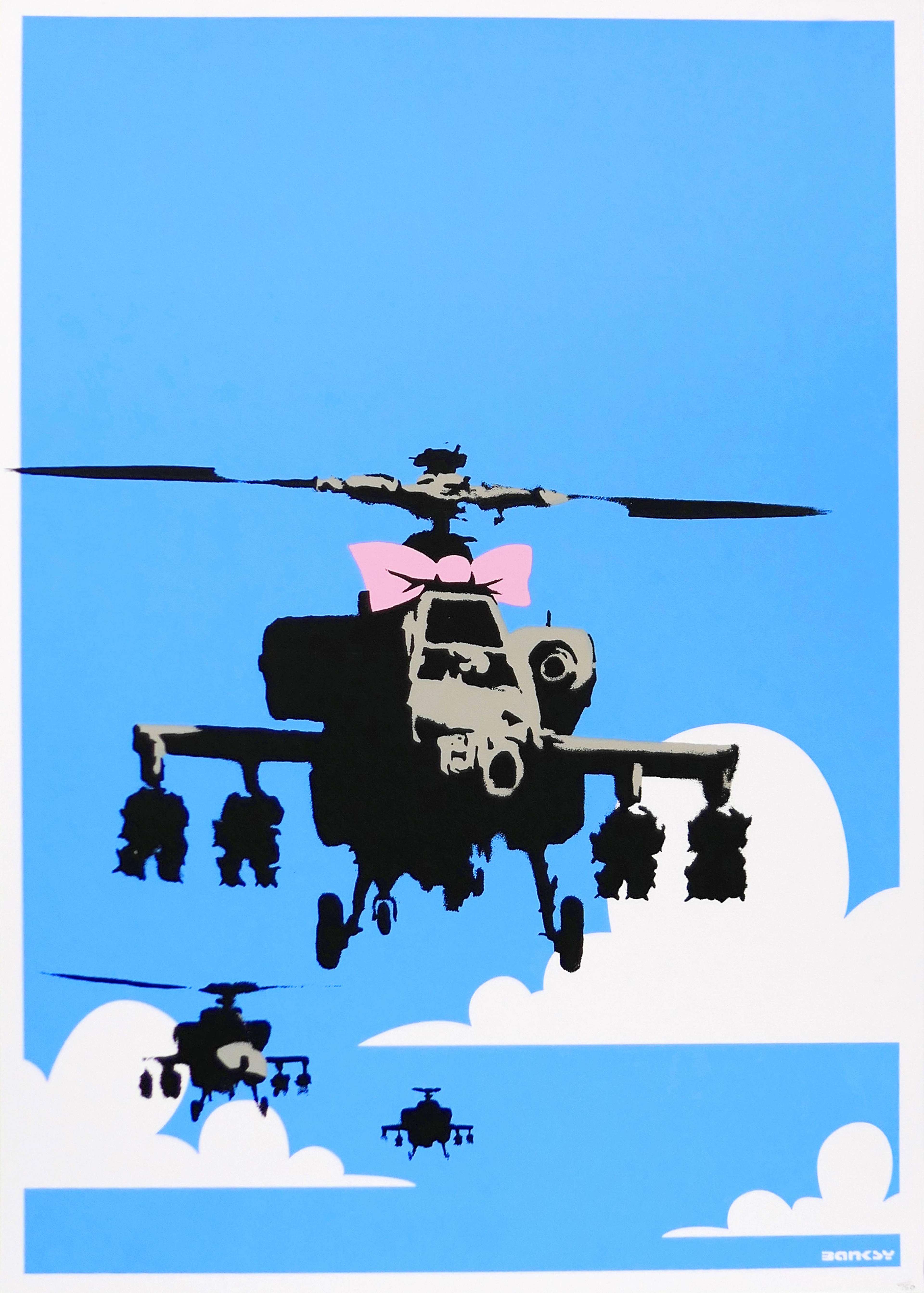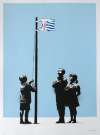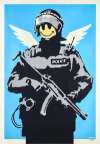Bomb
Love
Bomb Love makes clear Banksy's anti-war stance, showing a child hugging a bomb—an image of both vulnerability and hope. First appearing in 2001, the iconic image has since been reproduced in various editions, cementing its timelessness.
Banksy Bomb Love For sale
Bomb Love Value (5 Years)
The Bomb Love series by Banksy features both signed and unsigned editions, which diverge significantly in value. Signed examples consistently command premiums, with hammer prices reaching up to £99000. Across the series, 90 total auction sales have been recorded, with an average annual growth rate of 0.03%. For collectors, edition type plays a pivotal role in value potential within this series.
Bomb Love Market value
Auction Results
| Artwork | Auction Date | Auction House | Return to Seller | Hammer Price | Buyer Paid |
|---|---|---|---|---|---|
 Bomb Love Banksy Unsigned Print | 26 Nov 2025 | Deutscher & Hackett, Melbourne | £10,200 | £12,000 | £15,000 |
 Bomb Love Banksy Signed Print | 30 Sept 2025 | Christie's London | £29,750 | £35,000 | £45,000 |
 Bomb Love Banksy Signed Spray Paint | 29 Mar 2012 | Bonhams New Bond Street | £34,000 | £40,000 | £50,000 |
Sell Your Art
with Us
with Us
Join Our Network of Collectors. Buy, Sell and Track Demand
Meaning & Analysis
Bomb Love or Bomb Hugger is one of Banksy’s most prominent anti-war works. One of his early screenprints, it explores the dichotomy of love and war. Exploring a subject matter that the artist has made a number of works about, the first version of this image was created as a mural in East London in 2001, and is also featured in Banksy's book Banging your head against a Brick wall. A second version appeared in Brighton in 2003 and in 2005, Bomb Love was again featured in Banksy’s autobiographical book, Wall and Piece.
In 2003, Bomb Love, which shows a young girl hugging a large bomb as if it were a cuddly toy, was released as a limited edition of 150 signed screenprints along with 600 unsigned prints. Originally coming in a single colourway – fluorescent pink, Banksy has reproduced the image in many different formats over the years, including on canvas or on placards at anti-war protests.
A timeless Banksy print, it remains as poignant as ever. The bomb here, akin to those dropped from military aircrafts, is cumbersome in the child’s small arms, accentuating her small figure and evoking the fragility and innocence of childhood in contrast to the suggestion of violence.
The treatment of the child’s figure is reminiscent of other young characters created by Banksy like the famous Girl With Balloon painted in London in 2002.
